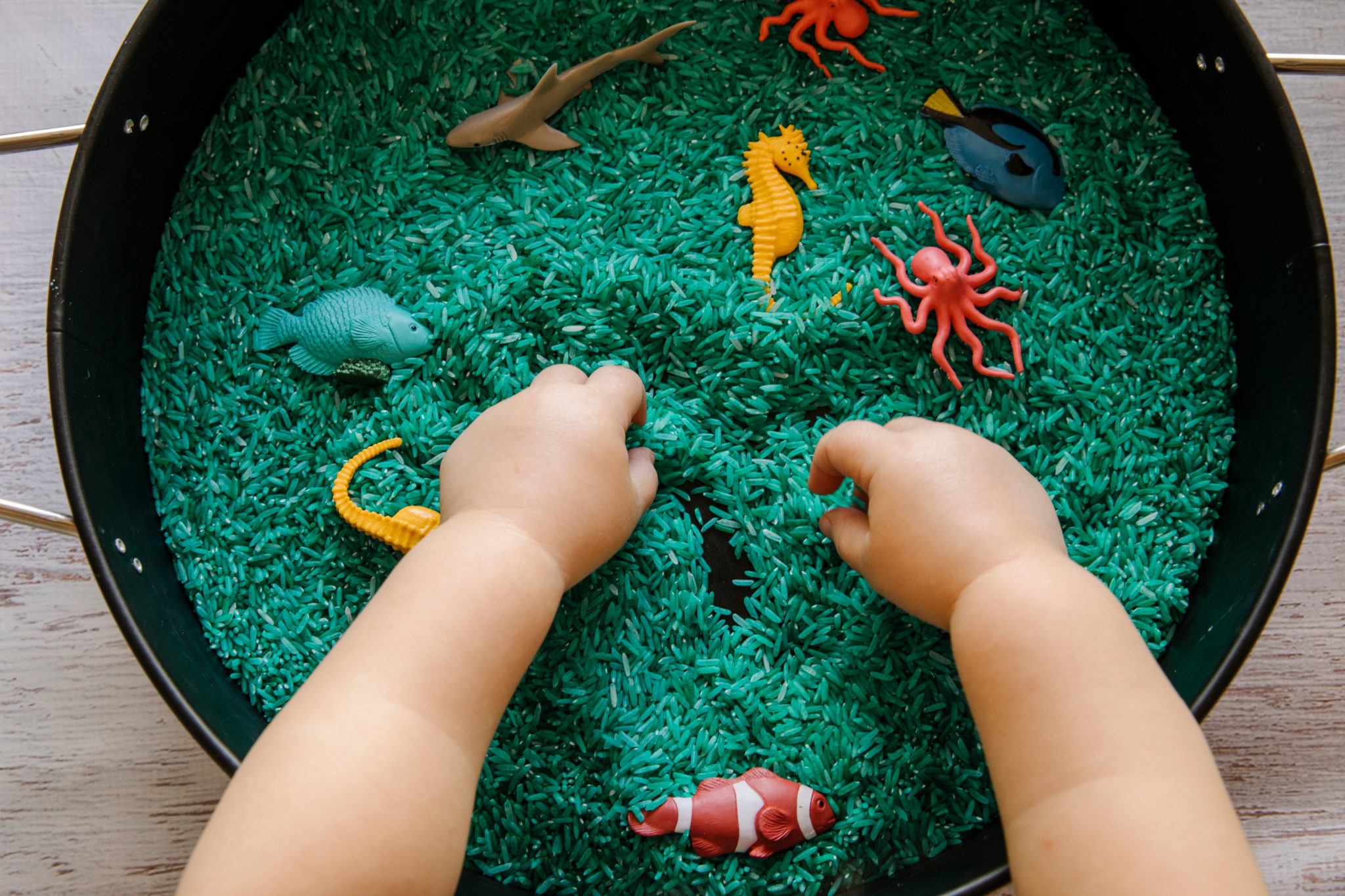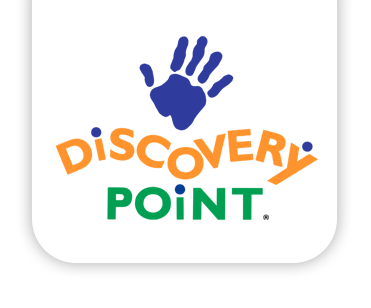Discovery Point Blog

4 Hands-On Play Ideas
Children seem to love anything ooey, gooey, and—let’s be honest—messy. You may be hesitant to indulge these tendencies so those little hands don’t become any stickier than they already are.
However, sensory play is a crucial part of early childhood development. As children actively use their senses to engage with their surroundings, they gain vital information that informs their decision-making processes. These types of activities help young brains create stronger connections and encourage children to observe and experiment before making conclusions. Plus, they’re an excellent alternative to screen time.
Incorporating Sensory Activities into Your Child’s Playtime
There are almost no limits to sensory play. All it takes is a little imagination to bring new textures and experiences to your child’s world. Take a look at our hands-on play suggestions and quick crafts for some ideas that are sure to not only keep your child busy, but also help them develop crucial skills as they play.
Matching Pairs
This one is so simple and fun that it’s easy to overlook how it promotes essential visual discrimination, sorting, and language skills. Start with what we’ll call a “sensory bin”—a large plastic tub (preferably with a top so you can put it away for later use) filled with rice, beans, corn meal, or any other affordable material that allows for easy digging and burying.
Next, take a tour around your house to find pairs of small objects. For example, chess pieces, toy cars, and even pairs of markers or crayons will do. Bury at least five sets in the bin before introducing your child to the task: finding matching pairs of objects.
This miniature scavenger hunt is a great way to introduce the concept of “pairs” to young children and also sets the stage for sensory play with the rice or other filler once all the pairs have been identified. To keep clean-up simple, lay down a large towel or blanket on the floor so stray rice grains are easy to collect.
Cloud Dough
It’s normal for babies to want to use their mouths to explore the tastes and textures of just about anything they can get their hands on. However, when you’re dealing with something containing chemicals or objects of questionable cleanliness, you may get nervous about giving your child the freedom to really explore with their senses.
That’s why this cloud dough, made with two completely edible ingredients, is great for babies and toddlers. It takes just moments to make, and if it’s ingested there’s no harm done.
Simply mix a cup of baby rice cereal with three tablespoons of melted coconut oil in a container. After combining the ingredients together and ensuring they’re at a comfortable temperature, you can place the mixture on a large tray and see how your child reacts.
The fluffy, flaky texture of this cloud dough is easy to shape and mold and lends itself well to squeezing, grabbing, spreading, creating—and tasting!
Homemade Slime
For older children who understand some things simply aren’t meant to be eaten, this stretchy, colorful slime is a real winner. Start by pouring a bottle of Elmer’s Classic Glitter Glue into a container and slowly add liquid starch (the kind you’d use for ironing) until the stickiness disappears and the mixture takes on a slime-like consistency.
Usually 1/8 to 1/4 cup of liquid starch will do the trick. Be sure to only add a little at a time, or you may end up with a rubbery ball. Your child can take over for the next step: kneading the slime. This helps give it a more workable consistency, making it stretchy, gooey, and ready for action.
Want to make playing with slime even more fun? Check out all the ways you can customize slime with various additives.
100 Stickers
You can even incorporate math into sensory play. If your child is constantly counting and always wanting to know “how many” there are of something, this exercise will give them the chance to see, hear, and touch as they count.
You will need a large piece of craft paper, a giant permanent marker, and well over 100 stickers (we all know a few will end up…somewhere). Use the marker to draw ten large boxes on the paper. Then, explain to your child you’re going to count to ten a total of ten times. As you count together, have your child fill each box with ten stickers. When you’re done, there will be 100 stickers on the paper.
If your child can count well over ten, you can work on counting 1-100 as he or she touches each sticker. This activity allows them to visualize what 100 of something looks like and helps them practice rote counting. And since stickers are involved, they won’t even realize they’re doing math!
For a spin on this activity, try this number box activity.
Looking for more hands-on activities?
You can use almost any object in your home for sensory play. We all know children love banging on pots and pans with a wooden spoon. But how does the sound change when they thump a pillow or tap a plastic trash can? Simple activities like these can help your child actively engage their senses as they interact with the world around them.
Looking for even more ideas? Check out these 12 sensory play ideas or these 25 play ideas for kindergarteners.


